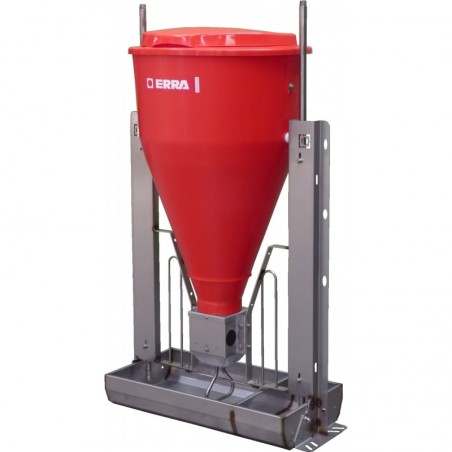The overall use of antimicrobials for animals in 2016 amounted to 104.4 tonnes active compound, decreasing for the third consecutive year, by approximately 5% compared with 2015. The decrease was mainly driven by the use of antimicrobials for pigs, which was 4% less than the year before. Particularly the use of tetracyclines for pigs has been reduced consistently since 2013.
In 2016, the antimicrobial use for pigs, cattle, fur animals and poultry comprised approximately 75%, and 12%, 5% and 2% of the total antimicrobial consumption for animals, respectively. The decrease in antimicrobial use for animals was mainly attributed to a 3% decrease in the amount used in the pig industry, which is the main driver of antimicrobial consumption in animals in Denmark, due to the size of the industry. Cattle and pigs are the two major production species in Denmark and they comprise almost equal proportions of live biomass.

The use of critically important antimicrobials in food production animals remained low. The use of colistin for pigs increased by further 40 kg in 2016. The use of colistin in production animals is of concern, since it has becoming increasingly important as a last resort antimicro- bial in human medicine. The increase in colistin use for pigs has likely been caused by a shift from other antimicrobial agents.
Antimicrobial consumption in pigs
In 2016, the total antimicrobial consumption in pigs (sows and piglets, weaners, finishers) was 78.2 tonnes active compound, a decrease of 3.3 tonnes (4%) compared with 2015. The treatment proportion (DAPD) of the total population reflects the trends in selection pressure within the population. However, the DAPD is much higher in the weaning pigs than in finishers and sows. Furthermore, the biomass of the weaning pigs is also very small (7.5- 30 kg, 4 weeks), compared with the finishers (31-107 kg, 12 weeks) and the sows. The large differences in DAPDs between age groups affects the DAPD of the total population and trends are influenced by changes in population structure. Thus, significant changes in export or productivity need to be accounted for, before interpreting the antimicrobial consumption patterns and selection pressure in the pig production. As an example, increased export of live pigs right after weaning could lead to an increase in DAPD for the remaining population, since the exported pigs were only in the country, while the treatment proportion was highest. Historically, the treatment proportion (DAPD) increased from 2004 to 2009, followed by a decrease in 2010 and 2011, which is considered a result of the “yellow card initiative” (See DANMAP 2010).

In 2016, the antimicrobial consumption in pigs, measured in DAPD, decreased by 5% to approximately 25 DAPD when adjusted for changes in export. Overall the number of pigs produced in 2016 increased by 3%, and the number of pigs exported increased by 9%. Within the different age groups, the treatment proportions decreased in weaners and finishers, but remained at the same level for sows and piglets. Thus, on average, on a given day in 2016, approximately 2% of sows and piglets, 1-2% of finisher pigs and 10% of weaner pigs were under treatment with antimicrobial agents. Also measured in DAPD, the antimicrobial use in pigs was 27% lower in 2016 than in 2009, when adjusted for changes in export.
Overall, the decrease was primarily seen for tetracyclines, pleuromutilins and beta-lactamase sensitive penicillins. Tetracycline has been one of the most commonly used antimicrobials in the Danish pig production for more than a decade. It is almost exclusively administered orally, and is especially used for treatment of gastrointestinal disease in weaning pigs and finishers. The overall use of tetracyclines in the pig production fluctuated from 2009 to 2013, but has since then decreased and 2016 saw the lowest DAPD levels since 2005. Measured in DAPD, the use of tetracyclines, for all age groups was reduced by 8% from 2015 to 2016 and has decreased 35% since 2009. The proportion of weaner pigs under treatment with tetracycline, on average, on a given day has decreased from approximately 5% in 2009, to approximately 3% in 2016.
While the overall consumption of antimicrobial agents for pigs has decreased almost consistently since 2009, the use of colistin for pigs has increased more than two-fold from 409 kg in 2009 to 864 kg in 2016, of which 752 kg were used for weaners. Although the use of colistin constitutes a very small fraction of the overall antimicrobial consumption in pigs (ap- proximately 1% in 2016), the increase has potential implications on human health, since polymyxins, to which colistin belongs, have found a new role for treatment of carbapenemase resistant infections in human medicine. Of the critically important antimicrobial agents, the use of fluoroquinolones and cephalosporins was close to zero in 2016
October 2017/ DANMAP/ Denmark.
https://www.danmap.org






